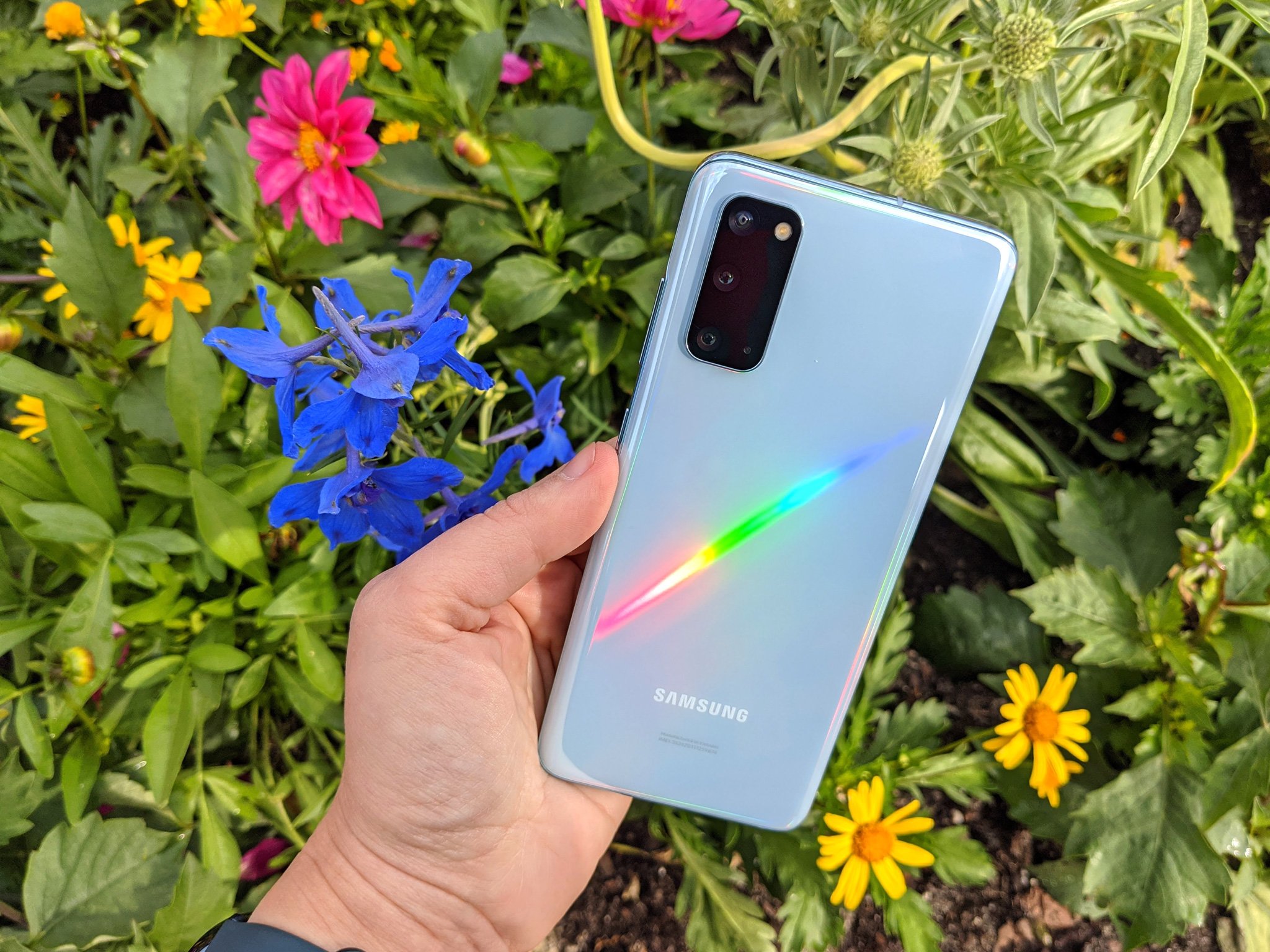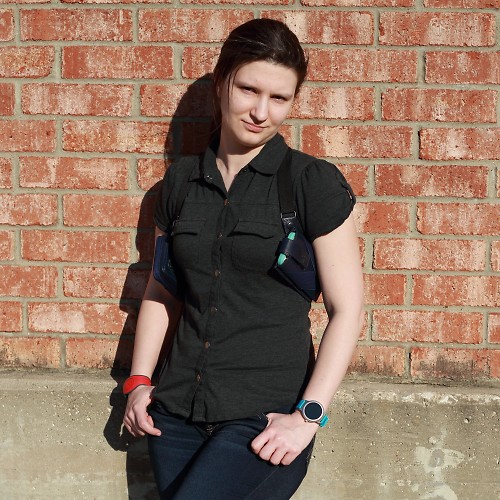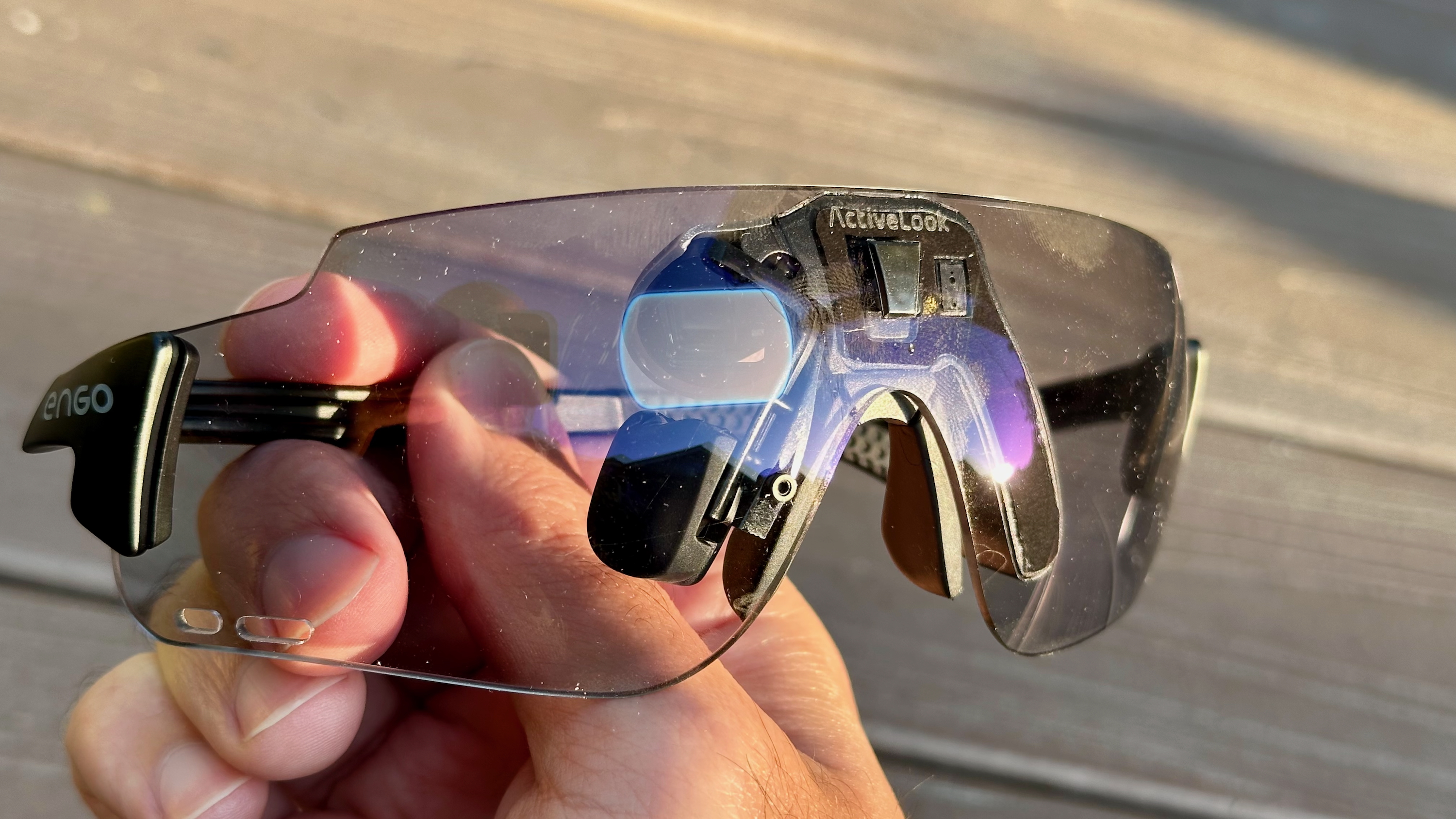Android Central Verdict
Bottom line: With a rich 120Hz screen, battery for long days, and top-of-the-line performance, Samsung made a flagship that actually justified its premium price without being too full of itself or too overstuffed to hold comfortably.
Pros
- +
Usable one-handed
- +
Truly impressive battery life
- +
Vivid daytime and outdoor photos
- +
Blissfully smooth performance
- +
Beautiful design with cute colors
Cons
- -
Slow fingerprint sensor fails too often
- -
Only supports sub-6 5G, not mmWave
- -
PD charging is still slower on most chargers
Why you can trust Android Central
While many folks looking for a new phone will immediately race to the biggest and fanciest new flagship around, the Galaxy S20 Ultra is just too much in size, price, and problems. While the Galaxy S20+ is a more reasonable phone, as a busy woman with small hands, it's too big to use one-handed, too big for my pockets, and too big my shoulder holster.
Thankfully, the "baby" Galaxy S20 is just a few hairs bigger than the Galaxy S10, and between the generous battery, a Lindt Chocolate-smooth 120Hz screen, and the most significant camera upgrade in Galaxy history, the Galaxy S20 is without a doubt one of the best Android phones of 2020 for non-Pixel-purists — and especially for women and small phone enthusiasts.
I've had my Galaxy S20 for a year now, and while I have some very, very tiny hang-ups with the phone, none take away from the great experience I've had with it.
Samsung Galaxy S20: Price & availability
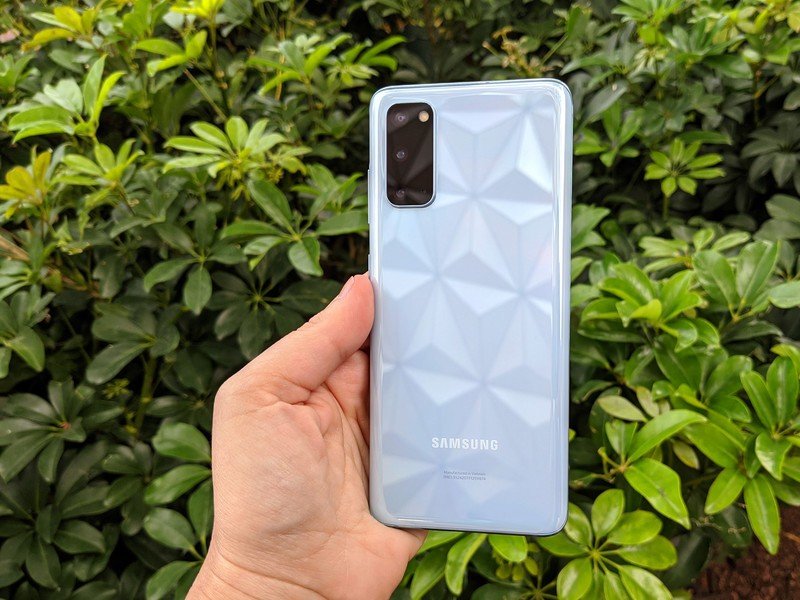
We are now a year out from the S20's launch and with the Samsung Galaxy S21 available for $200 less with a better processor and swanky new design, the Galaxy S20 has stopped being sold new at most retailers including Samsung, Amazon, and B&H, though some carriers are still stocking it for reasons unknown.
The Galaxy S20 launched for $1000 in March of 2020, but the phone saw some decent price cuts around Amazon Prime Day 2020 and Black Friday 2020. If you're considering buying one today — though the only reasons I can think of would be if a microSD card is a necessity or you just really like having a curved screen — I wouldn't pay a penny over $700, which coincidentally is the price of the Galaxy S20 FE, the only S20 version still widely sold today.
If you're looking to buy a Galaxy S20 used, they're usually going for about $500-$550 except for the Cloud Pink, which you will pay a premium for — and, really, girls, that's what cute cases like the Tech21 Studio Colour are for. There's nothing wrong with saving money by buying this phone used, especially since it's got two years of updates left on it and it's still got great cameras and a beefy processor; just make sure you don't buy last year's phone at this year's price.
Samsung Galaxy S20: Best in the hand and the pocket
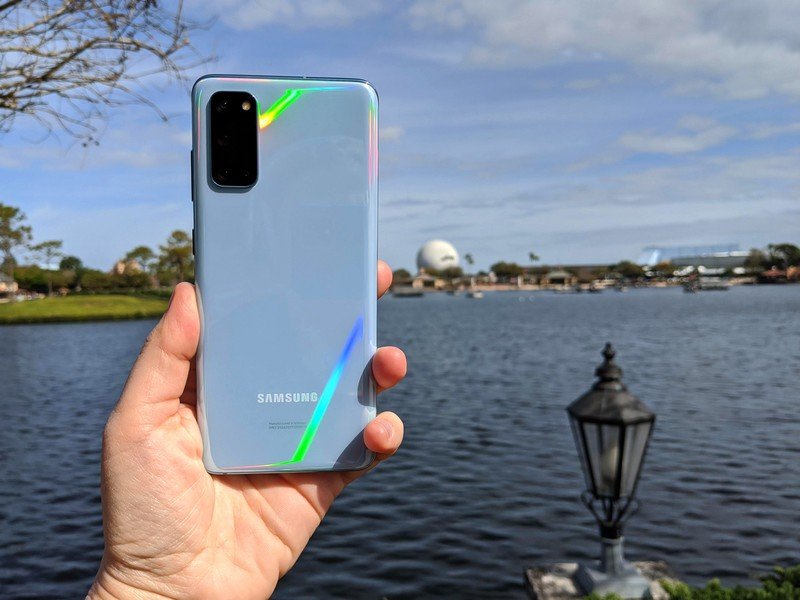
This blue baby might be the smallest of the S20 line, but it's just a hair bigger than the Galaxy S10 and Note 10. It's the same width as the Pixel 4, but it's taller. We have a handy size chart that helps demonstrate how the profile of the phone stacks up, but what it doesn't show is how the curved sides of the front and back glass help the phone feel so thin in the hand despite it holding a 4,000mAh battery.
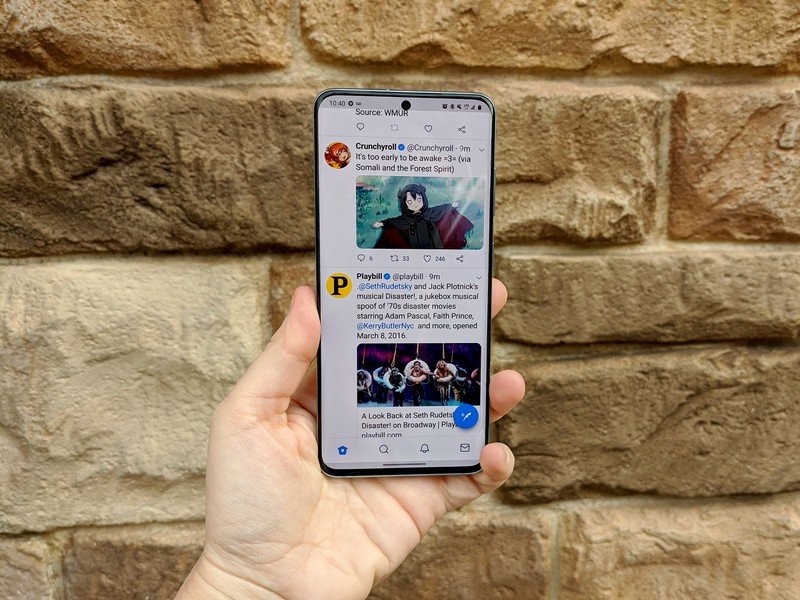
This is the only S20 that I can comfortably use one-handed — though for more than one-word SMS replies, you'll still want to use two hands. I also highly recommend a case, because glass back + sweaty palms = shattered phones and hearts. I'm also a big believer in the power of the PopSocket, especially if you intend to use your phone one-handed most of the time like I do.
Samsung has consolidated buttons this year, putting all the buttons on the right side of the screen and combining the Bixby and power buttons. This is great news on all fronts, mainly because it means that taking a screenshot doesn't need you to press-and-hold anymore; just single press the power and volume down buttons.
Around back, Samsung wised up and shoved the camera module to the left corner while also reconfiguring from a row of cameras to a grid for a smaller footprint. While the device may look more symmetrical if they were still dead center, the corner placement means you're less likely to get a finger in the way when you're lining up a shot — especially if you use a phone grip to steady your shooting hand like me. It also means that if you go in for cute cases like Skinit's licensed cases, there's far less chance the camera module will block out a crucial part of the design.
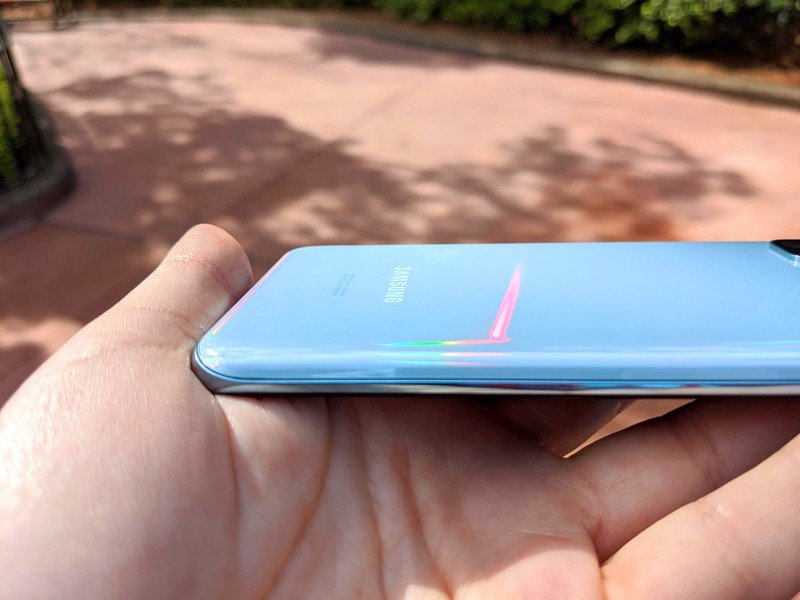
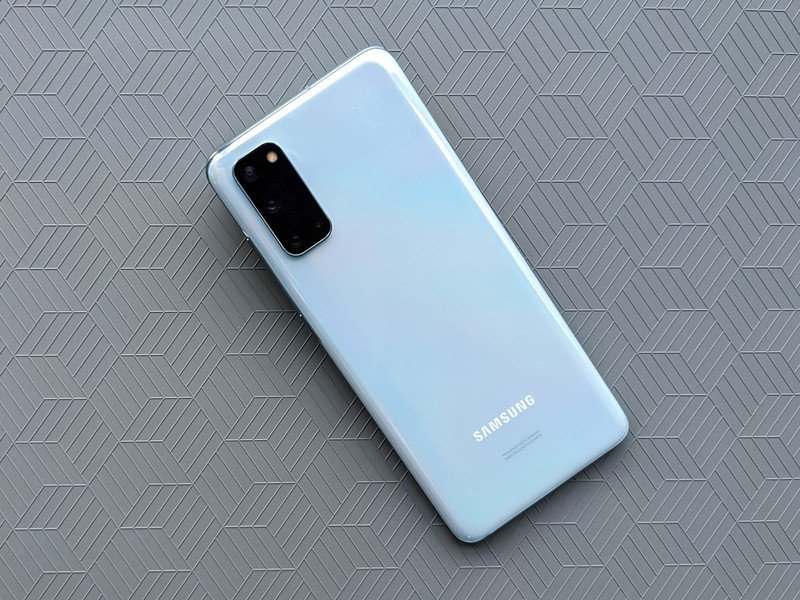
Source: Ara Wagoner / Android Central
Of course, I'm not sure you'll want to cover up the S20's natural beauty. While the bigger models are mostly confined to grey and black, the regular S20 got two insanely cute colors this year: Cloud Blue and Cloud Pink. The Cloud Blue on my S20 is very pale, bordering on silver at times (which is why I've lovingly nicknamed it Cinderella Blue), but the color shows through enough to give the S20 personality and a soft glow. Cloud Pink is a little more vibrant, but it's definitely not overpowering. Both are cute enough that I strongly advise getting a clear case, since glass backs are grime magnets and get slippery when sweaty.
While it doesn't show up as much in the renders, these two colors still get those refractive rainbows we saw from the Note series last year, though they've been tastefully toned down from the psychedelic Aura Glow. If you're playing with the S20 in sunlight, the rainbows are easy to find, but they're not always there every time when you're inside in more artificial light.
Samsung Galaxy S20: Prepare to be spoiled by 120Hz
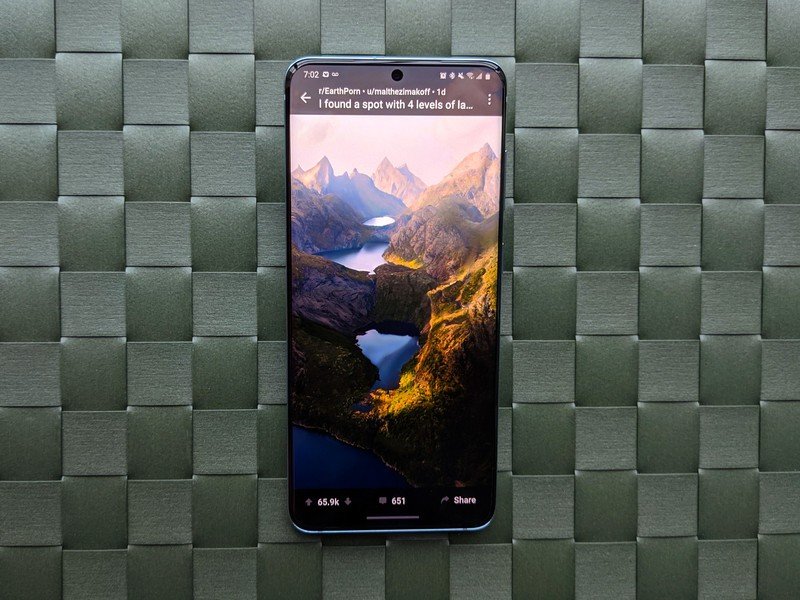
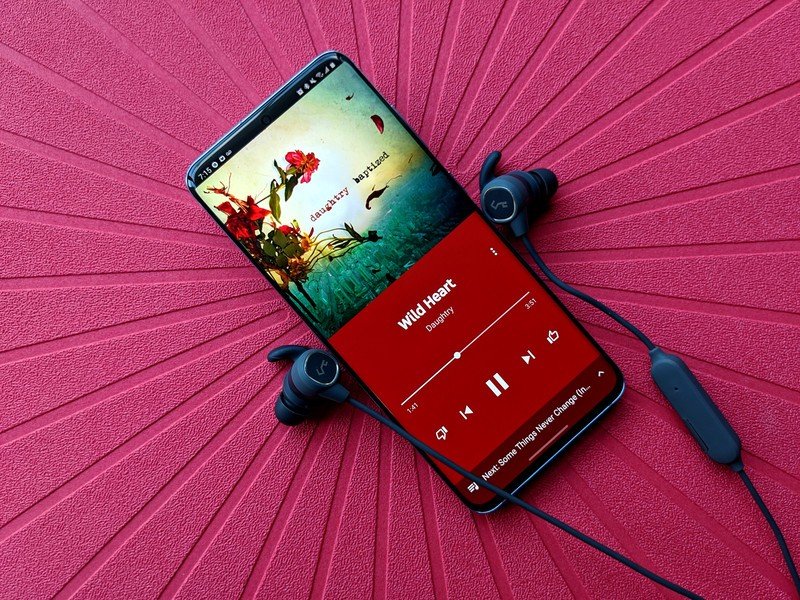
Source: Ara Wagoner / Android Central
The S20 has the smallest screen of the three models, which means that it has the highest pixels per inch, and — at least to my mind — looks the best. Colors are vivid, the screen is easy to read in direct sunlight, as I did for several hours this last week, and 120Hz is smooth as silk when you're flipping through menus and scrolling through your Twitter feed.
Once you turn on 120Hz, you'll never want to go back to a 60Hz screen.
120Hz doubles the rate your phone refreshes what's on the screen, and because it redraws the screen twice as often, that allows motion to look more natural and more fluid. While not turned on by default for a small battery boost — and honestly, the screen still looks better than the Pixel 4 at 60Hz — it's something you'll notice almost immediately the moment you turn it on and never want to turn it off again.
That butter-smooth experience is a much bigger addiction than using the phone at full 1440p resolution, and you have to pick one or the other because when you go to WQHD, it'll kick you back to 60Hz. The difference between 1080p and 1440p isn't one you'll notice at all times, but you'll see 120Hz far more often.
The screen still has a hole punch, but I like it much more centered on the screen rather than stuck to the right corner. The centered cutout blends in with more apps and with more wallpapers this way, and it doesn't jack up the spacing of the status bar at the top as much since the hole punch itself is smaller than last year.
Samsung Galaxy S20: Battery for literal days
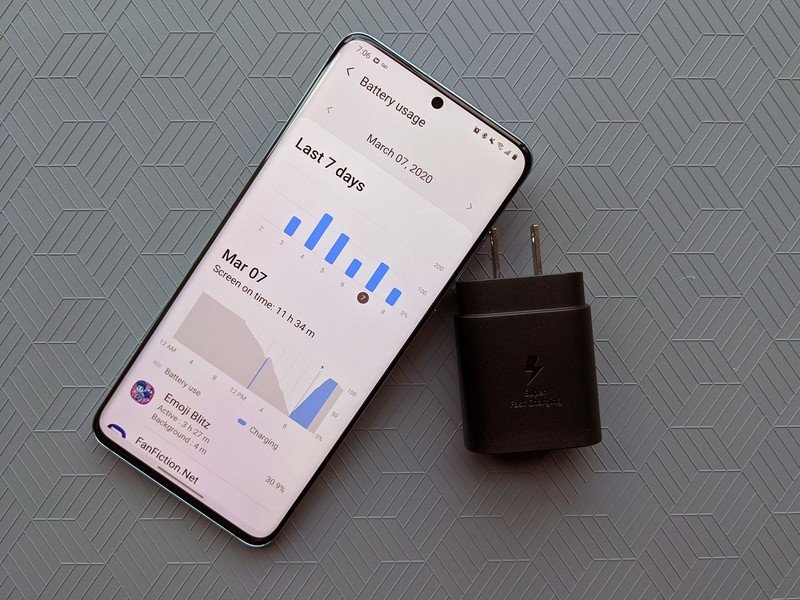
The S20 comes with a 4,000mAh battery, which seems small next to the Ultra's 5,000mAh cell, but it also has a smaller screen to illuminate and refresh. In other words, that capacity is more than enough to get you through the average day. In fact, on the default settings — 1080p 60Hz screen, auto-brightness, mostly indoors with Wi-Fi and LTE — I got 11 hours of screen time on a single charge, including 3.5 hours of reading and three hours of Disney Emoji Blitz gameplay.
Even with 120Hz on, you can expect at least four hours of screen time at max brightness outdoors — the screen was easily readable in full sunlight while waiting for the Magic Kingdom's parade and Epcot's Garden Rocks concert — and a battery that should last you all day on anything less than a park-open-to-close, camera-happy vacation day.
No 9V/2A PD charging is a disservice for a $1000 phone.
When using the in-box 25W charger, the S20 will recharge from dead to full in about 75 minutes, but when you're on the go with a power bank or more generic Power Delivery charging, it seems to top out at 15W (9V/1.65A). Granted, the regular S20 doesn't have 45W charging like the Ultra, but it does still have the same strict requirements for fast-charging at 25W, despite the USB Fast Charger certification which should allow it to quick charge with a wider array of Power Delivery chargers.
Now, I'd understand having stricter requirements in place for charging at 30-45W because you can generate a fair bit of heat depending on your setup. Not supporting standard 18W (9V/2A) PD fast charging is a disservice to your customer, especially for a $1000 phone. After all, even $200 Android phones support 9V/2A charging, and so do iPhones.
Samsung Galaxy S20 Android 11 goodness with Samsung's secret sauce
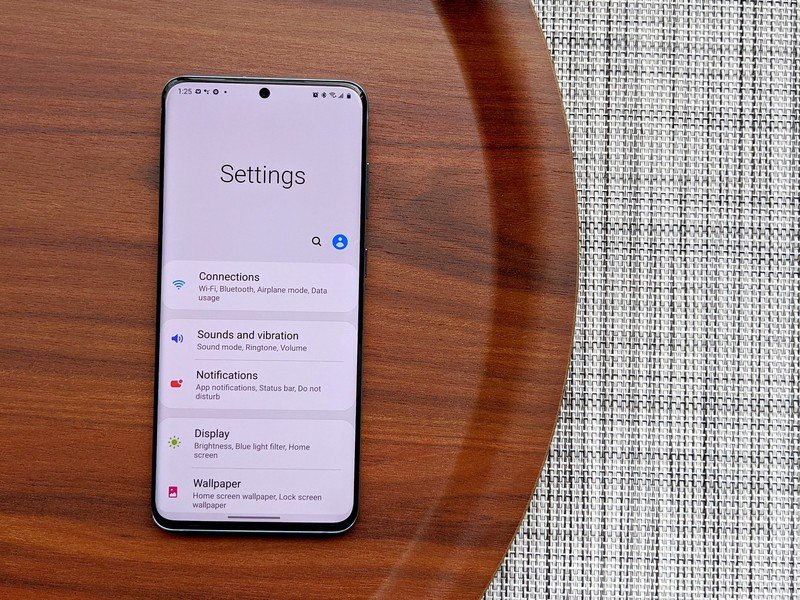
With 12GB of memory and the Snapdragon 865, the Galaxy S20 zips along through any app I throw at it, and especially combined with that 120Hz screen, everything is smooth as silk. If you're wary of the S20 because you've been burned by Samsung's software in the past, One UI 3.1 is adaptable, reliable, and only minimally bloated.
Samsung's software is refined and closer to Pixel than ever.
The software on the S20 is mostly the same as on the newer Note 20 and S21 — the menus and Samsung apps are designed to avoid making you reach to the top of its extra-tall displays, we finally have a system-wide dark mode that impacts regular apps as well as system apps, and Android 10 brought more granular permission controls to us so that we can try to curtail the amount of location and tracking data an app collects about us. For the Galaxy S20, we do have a small smattering of pre-installed apps — Facebook, a quartet of apps from Microsoft, a few carrier apps, and a dozen non-essential Samsung apps.
Among some of the more notable improvements made this year, one is something that is needed far more on Samsung's less powerful phones: the ability to pin apps to memory and prevent the phone from ever killing them. I instantly did this with YouTube Music, just to ensure nothing would throw off my groove. The S20 is the first non-Pixel phone to ship with Live Transcribe and Live Caption, which is excellent news from an accessibility standpoint but will be rarely used by the average user.
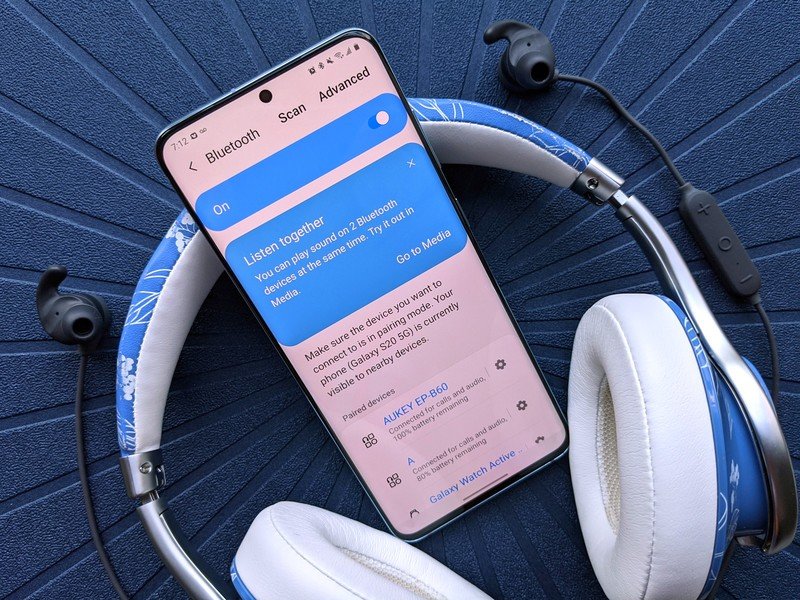
Dual Bluetooth returns, allowing you to play music to two different Bluetooth devices at once. I find this more useful than the new Music Share feature that allows your S20 to essentially act as the DJ, building a playlist of music from your and your friends' phones.
If there's any hangup to be had in the S20's performance, it's that the S20 kept the same finicky, almost useless fingerprint sensor as last year's models. There have been some software updates here and there for it, but nothing changes just how little you can rely on it. I use Smart Lock to avoid that sting of disappointment every time I open my phone, but it's still hiding underneath. There are enough other security options that it's not a dealbreaker, but it is a definite annoyance.
About 5G on the Galaxy S20
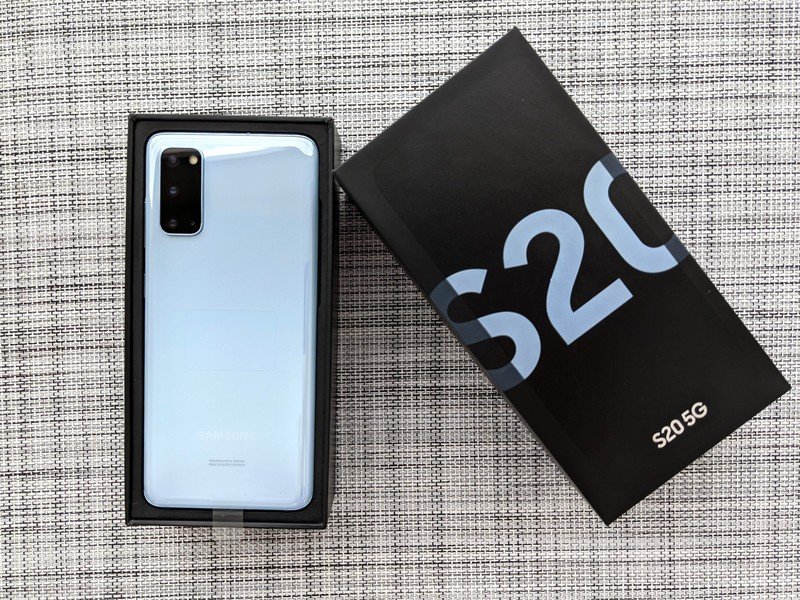
The smaller S20 is the only of the three models to not support mmWave 5G, only sub-6. I don't mind the lack of mmWave because, as Andrew pointed out in our S20 Ultra review, mmWave covers a ridiculously small area — a few hundred feet per antenna. While sub-6 isn't as commonly deployed, it covers a larger area where it is supported and is more reliable, as mmWave can be notoriously finicky to find and maintain a connection on (especially indoors).
If 5G coverage matters to you, you can stop reading this review right now and head over to the Galaxy S21 review instead, as the S21 supports sub-6 and mmWave 5G — and the S21+ and S21 Ultra both support UWB, as well.
Samsung Galaxy S20: Big camera improvements, even on the little one
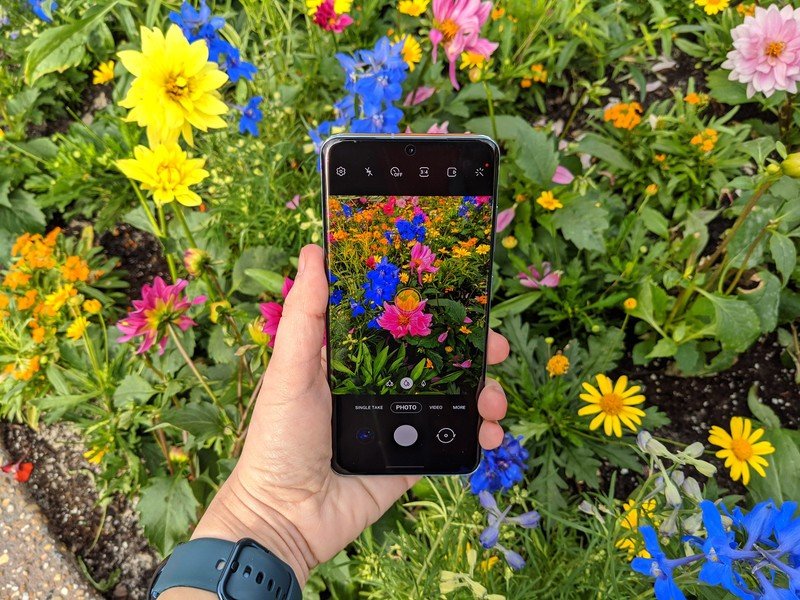
For anyone that needs a tl;dr for the S20 cameras, here's the lowdown: It's much better than the S10 and it's more vivid than the Pixel 4, but Pixel gets the edge at night and on focus. Faces can get a little too smoothed out, night shots are better than ever before but still get blurry if you're not steady, 1080p video is damn smooth, 4K video is great, and 8K is overkill.


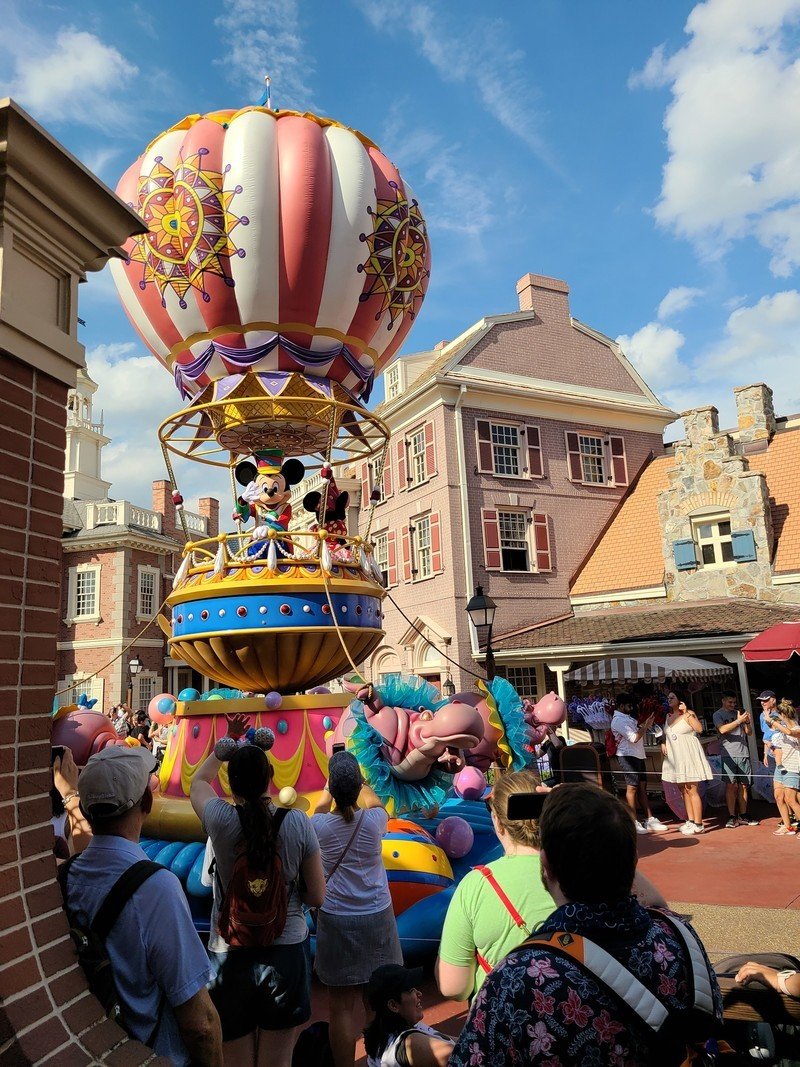
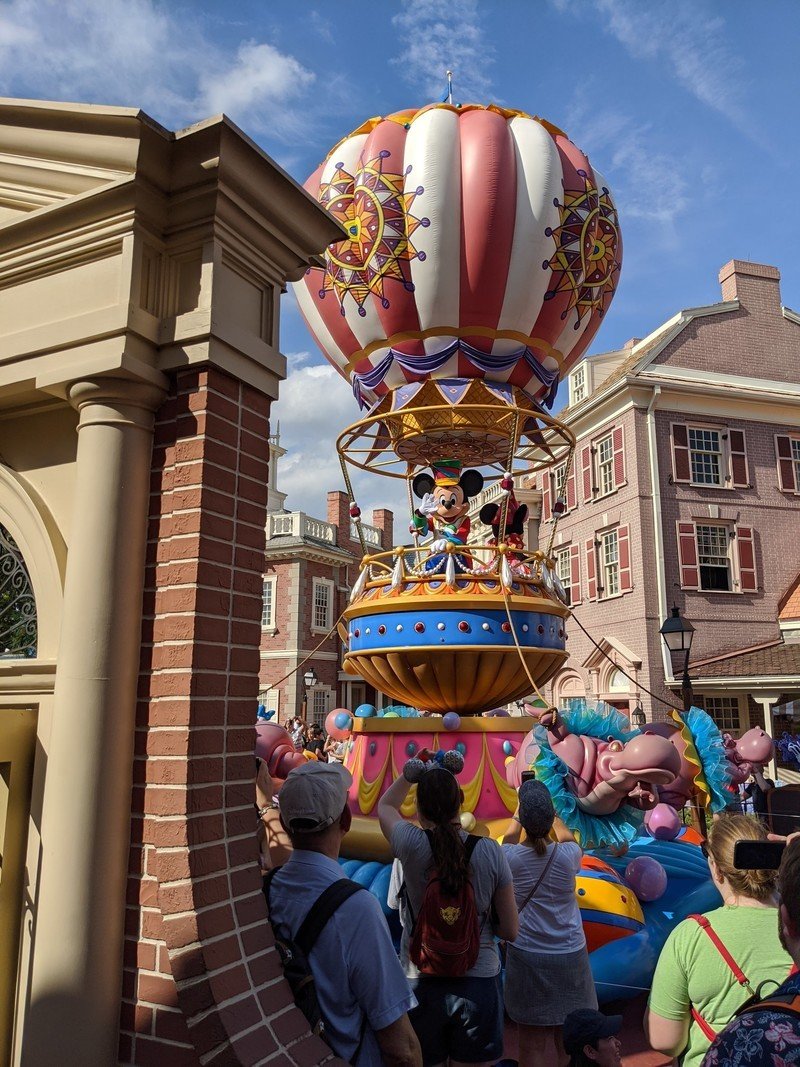
Source: Ara Wagoner / Android Central
Galaxy S20 (left) | Pixel 4 (right): You can see how the Pixel's shots seem dimmer and duller compared to the S20.


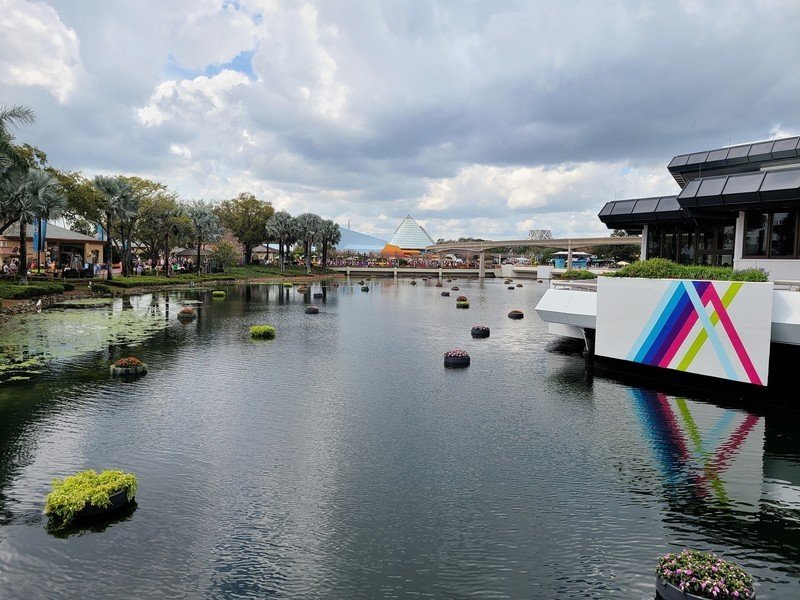
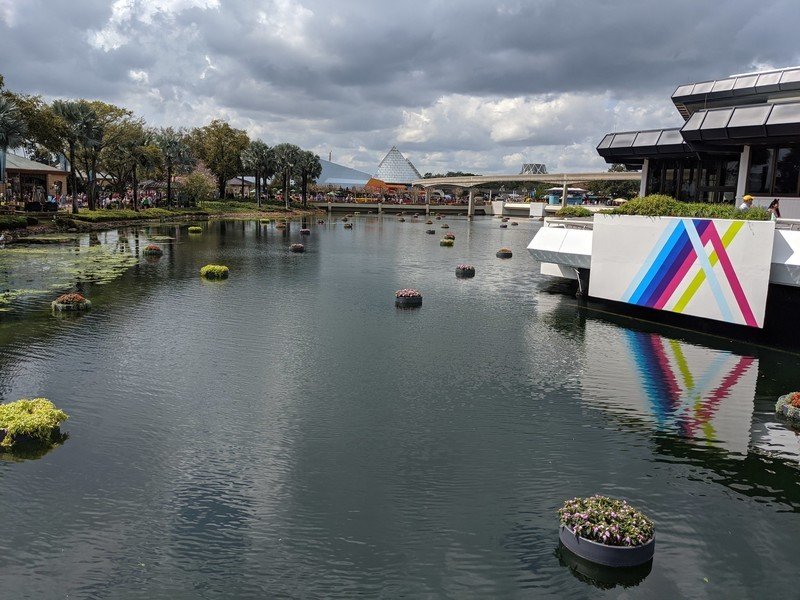
Source: Ara Wagoner / Android Central
The cameras on the Galaxy S20 are a big improvement over last year's S10, and for most daytime and outdoor photography, the S20 looks more vibrant and vivid than the Pixel 4. It's still slower than Pixel on auto-focus, but the S20 doesn't have a time-of-flight sensor like the S20+/Ultra and doesn't suffer from the wonk in its focus as the Ultra does.

As my colleagues saw in our reviews of the Ultra and Galaxy S20+, the Galaxy S20 can over-smooth facial details and make photos of your friends and kids seem soft or blurry at times. However, it seemed to do just fine on performer's faces during parades and performances. I'm honestly okay with the brightening and smoothing it does on faces most of the time, but I do wish it would be a little faster on shutter speeds so that I wouldn't have quite so many shots lost to motion blur with my shaky hands.
This is especially true at night. The S20 is magnitudes better than the S10 for dimmer indoor scenes and nighttime outdoor shots, but I'll tell you right now that just like Night Sight on the Pixel 4, you're not going to want to use Samsung's night mode without a tripod. It just takes too long to avoid moving your hand and blurring the shot. The S20 lets in a lot more light, but its tendency to try and over brighten at night leads to overprocessing and blur from too long of a shutter speed, so plan your shots carefully and consider shooting on Pro mode instead of Auto.
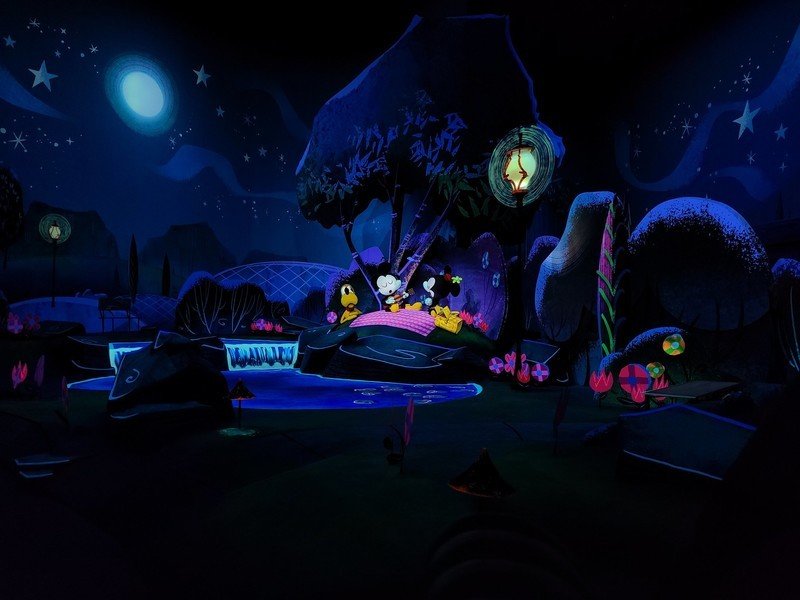
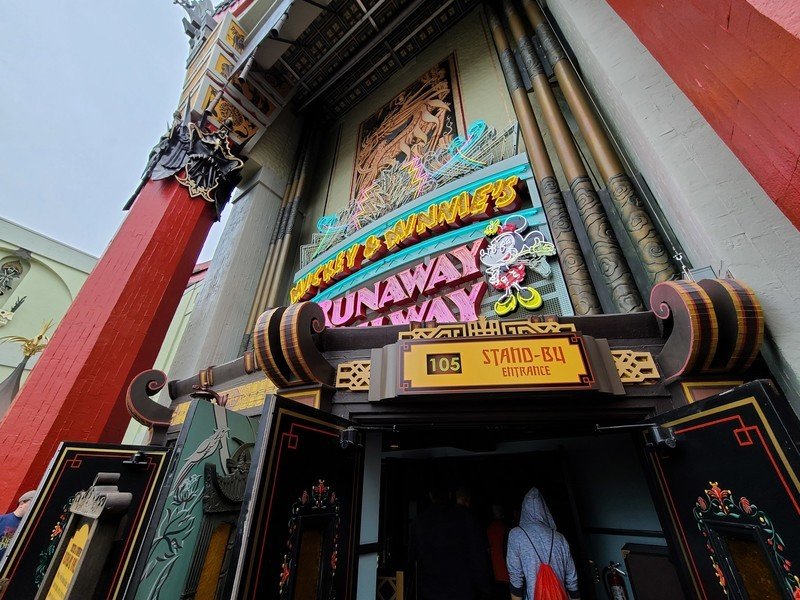

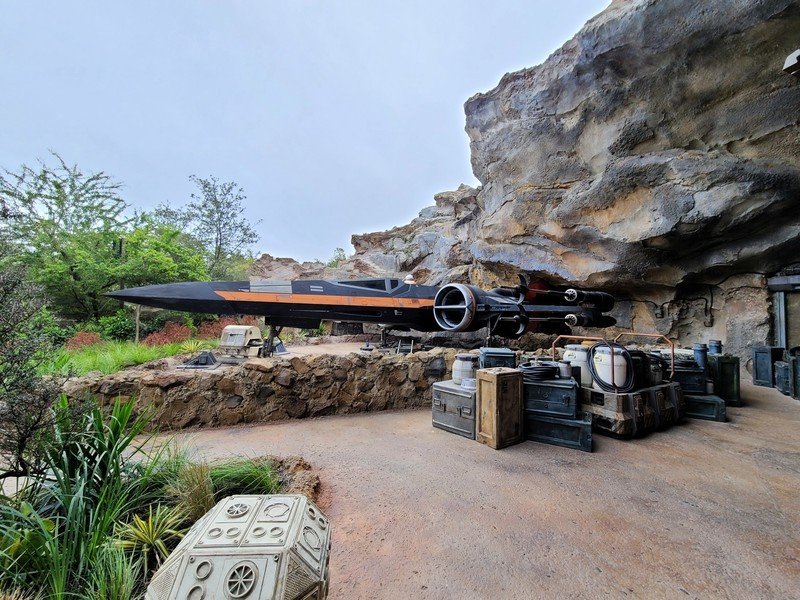
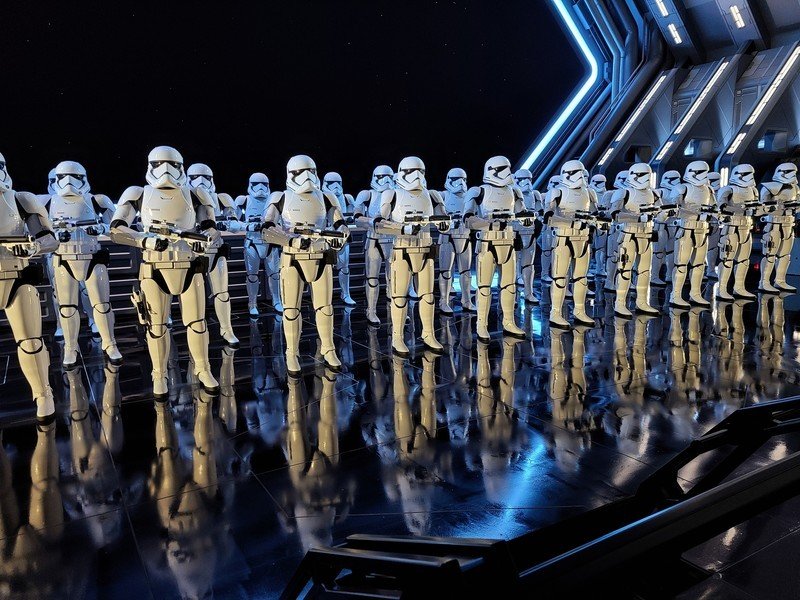


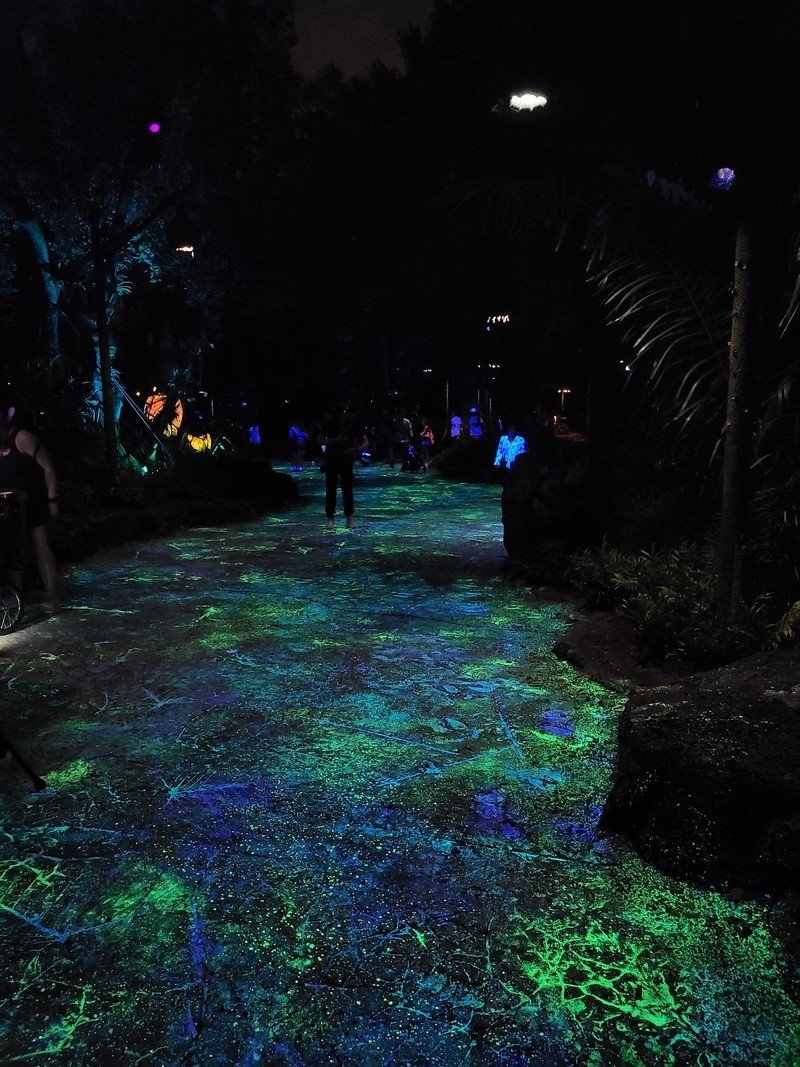

I did get one good shot while on the newest dark ride at Hollywood Studios, but that happened while the ride vehicle was stopped. Otherwise, I got decent videos (no stabilizer/tripod grip), but individual photos were almost always blurred while the ride was in motion. The ultra-wide is handy for selfies and vacation photos in crowded quarters and limited timeframes, though, especially around Galaxy's Edge and the Millenium Falcon.

One area where the S20 has a clear edge over the Pixel is the GIFs, which is a weird thing to say, but I like to take them during fireworks and the like. While Google Photos, you can't use more than about 40 images to create an animation, but Samsung's Gallery app will let you turn a 100-frame burst shot into a 640x480 GIF. You can even control the speed and add stickers, text, and emoji to the gif as you create it. Is this a totally niche function? Yes, but it's a really nice niche function.
Samsung Galaxy S20: Oddities and observations
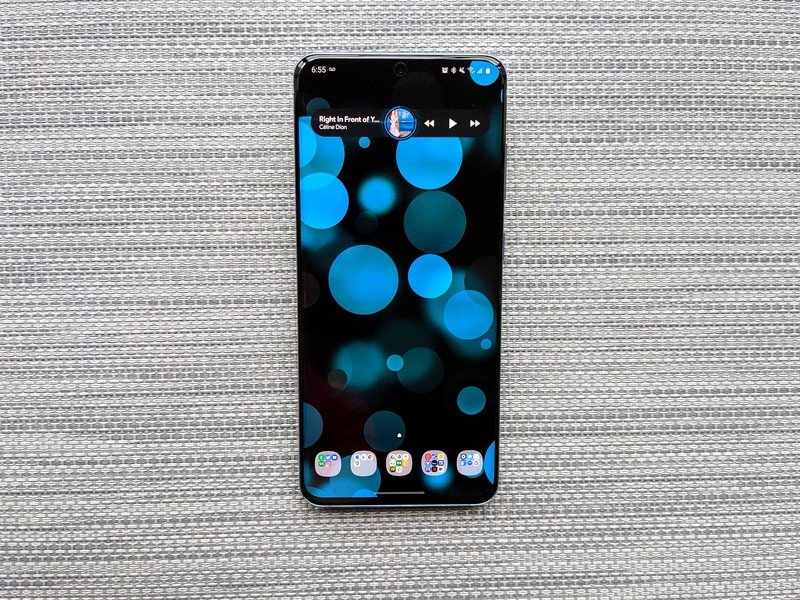
No matter how great a phone is, there are always some minor quirks and annoyances. Some of them are bad, some of them are hidden gems, and most are just little things to be aware of:
- This is the first Samsung phone I've ever come across that uses Absolute Volume by default. Most of you probably won't even notice, especially if you come to the S20 from a Pixel or an iPhone, but if you're upgrading from another Samsung, it'll be weird. You can disable it, but you'll have to unlock the Developer options menu to do so.
- If you actually intend to use Samsung's "One UI Home" launcher over any of the best Android Launchers out there, do yourself a favor and turn on "Swipe down for notification panel" in the launcher's limited settings menu. I don't know why this isn't on by default, but at least it's an option this year.
- There are a couple of quirks to the camera app this year, but the biggest one is that holding down the shutter no longer triggers burst mode: it starts shooting a video. To take a burst shot or a gif, you drag the shutter button to the edge of the screen. It's also really easy to swap between modes when you're adjusting the exposure of a shot, so make sure you tap directly on the slider.
Samsung Galaxy S20: What about the Exynos version?
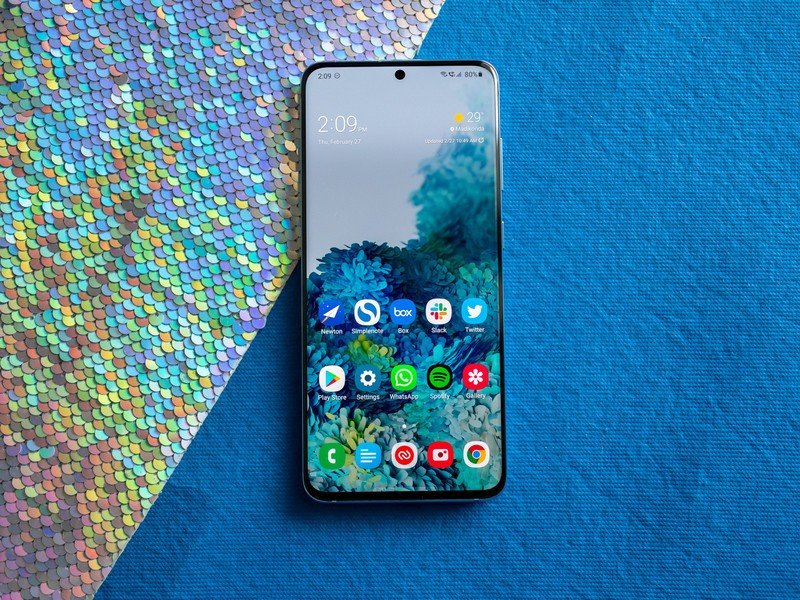
The Galaxy S20 looks identical between the Snapdragon and Exynos versions, the latter of which is sold outside North America. As for the internal hardware itself, the Exynos 990 features two in-house Mongoose M5 cores at 2.73GHz that do the heavy lifting, and there are two Cortex A76 cores at 2.50GHz and four A55 cores at 2.0GHz. The A76 cores aren't the latest available — Qualcomm is using the A77 cores in its chipset — but in day-to-day use, you won't notice any difference.
There's no lag or stutter, and the chipset handles everything you throw at it with ease. That said, I tested my Exynos 990-powered S20 against my colleagues' Snapdragon 865 version, and while Samsung made a lot of decent upgrades this year, it still doesn't measure up to what Qualcomm is offering.
The Exynos 990 is particularly bad at gaming. The Mali G77 GPU just doesn't deliver the same level of sustained performance as the Adreno 650 on the Snapdragon 865. If you play a lot of visually-intensive games, you will notice the phone heating up and frame rates plunging after 30 minutes.
So for another year running, the Exynos version that Samsung sells in most global markets isn't quite on the same level as the phone that's available in the U.S. and Korea. Samsung is unique in its strategy to dual-source its chipsets, and while the company says it does so to ensure it has adequate supply, it does feel like Exynos buyers are getting short-changed here.
Exynos battery life is better than previous years, but still not on par with what Qualcomm is offering.
The biggest issue with Samsung's flagship Exynos designs in the past was battery life. For whatever reason, Samsung just hasn't managed to deliver the same battery longevity figures as Qualcomm, and that has been a continual issue for customers that picked up the Exynos variants of the Galaxy S9 and S10 series.
But first, some numbers: the regular Galaxy S20 has a 4000mAh battery, and has 25W fast charging. The charger bundled in the box works over 25W USB PD, and it also has PPS. There's 15W wireless charging, and like last year, you get Wireless PowerShare — the ability to wirelessly charge other devices like the Galaxy Buds or Galaxy Watch at 9W. It takes just over an hour to fully charge the battery from zero using the bundled wall plug, and you'll get a 60% charge in 32 minutes.
Samsung has made some gains in this area this year, and I consistently got a day's worth of usage out of my Galaxy S20 with the screen at 120Hz throughout. Screen-on-time hovered around the five-hour mark on most days, with usage spread across 12 to 14 hours before the battery fell below 10%. There never was a time when I was anxious about the battery not lasting the entirety of the day, and battery life, in general, has been better than what I got on the Galaxy S9+ and S10+.
Having said that, the battery life from the Exynos 990 version of the Galaxy S20 is still not on par with its Qualcomm counterpart. The Snapdragon 865 variant continues to lead the way in this category, and the Exynos 990 just isn't in the same league when it comes to performance-per-watt figures, a good measure of just how efficient a chipset is in real-world conditions.
So to sum it up, the Exynos 990 is better than its predecessors, and if you're switching from the Exynos 9810-based S9 or the Exynos 9820-based S10, you will see better battery life. It isn't the same as what you get from the Qualcomm version of the S20, and that once again calls into question Samsung's decision to use an inferior chipset in global markets.
Samsung Galaxy S20: The competition
The Galaxy S20 has now been out for a year and it has a lot of competition these days, starting with the its successor, the Galaxy S21, which is less expensive, has slightly improved cameras, better 5G support, a beefer processor and a flat screen. I know a flat screen doesn't sound like a big benefit, but it means that screen protectors will fit more easily and that the screen isn't quite as fragile — curved glass is more delicate by nature. There's also the Galaxy S20 FE, which has a larger screen, lower price, and the same great performance.
There's also the competition outside of Samsung to consider; the OnePlus 9 improved its camera game this year, but they're still not quite as good as the S20, and OnePlus's software is now chasing after Samsung in terms of both design and update consistency. The phone I eventually gave up my S20 for was actually the Google Pixel 4a, which despite its much lower price tag had a slightly better camera experience and the benefit of Google's impeccable update schedule. The Pixel 4a is also a physically smaller phone, which was a large part in my decision as I prefer phones that I don't strain my thumbs one-handing. Of course, if you want flagship quality but Pixel cameras, the Pixel 5 is another excellent option, and it's both more affordable and more available than the S20.
Samsung Galaxy S20: Should you buy it?
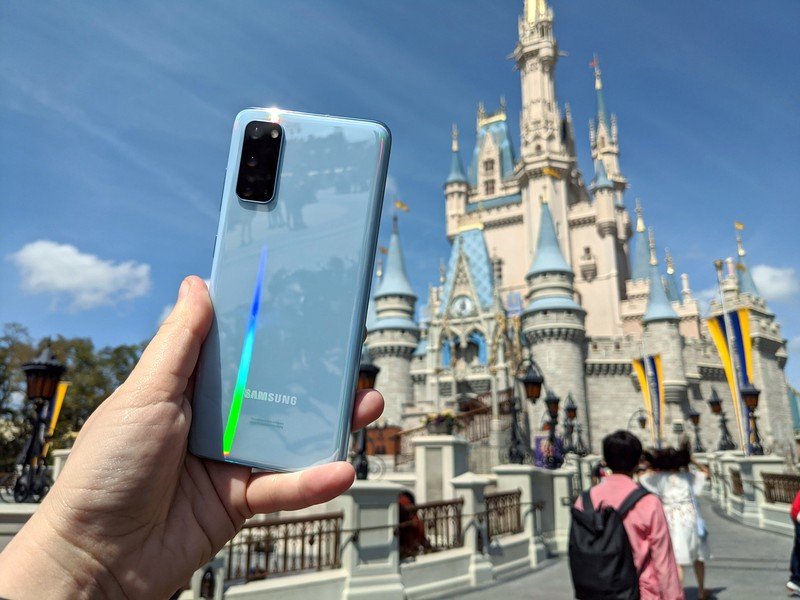
Speaking purely from a value standpoint, the Galaxy S20 is the clear winner of the S20 series. For at least $200 less than the other models, you get just as good a camera experience, the same excellent performance, distinct Samsung software, a more pixel-dense screen, and a reasonably-sized phone that will actually fit in a ladies' hand and in some jean pockets. Oh, and you get actual colors instead of boring black and grey.
Even against the latest from Google and Apple, the Samsung Galaxy S20 held its own and then some. Its battery ran rings around the Pixel, it has one of the best screens in the industry, and unlike the iPhone 11, it's got sub-6 5G for you to take advantage of in the upcoming years when networks have actually been built out enough to take advantage of it.
4.5 out of 5
Before the S20 FE and S21 arrived to steal the S20's thunder, it was absolutely worth buying, but these days, the Galaxy S20 is a good phone whose time has passed. It's hard to believe that a phone that's only a year old is already out to pasture, but Samsung's follow-ups are just too good to ignore. Six months ago, this was the one to buy, but there's a reason most retailers stopped selling it the week the S21 released.
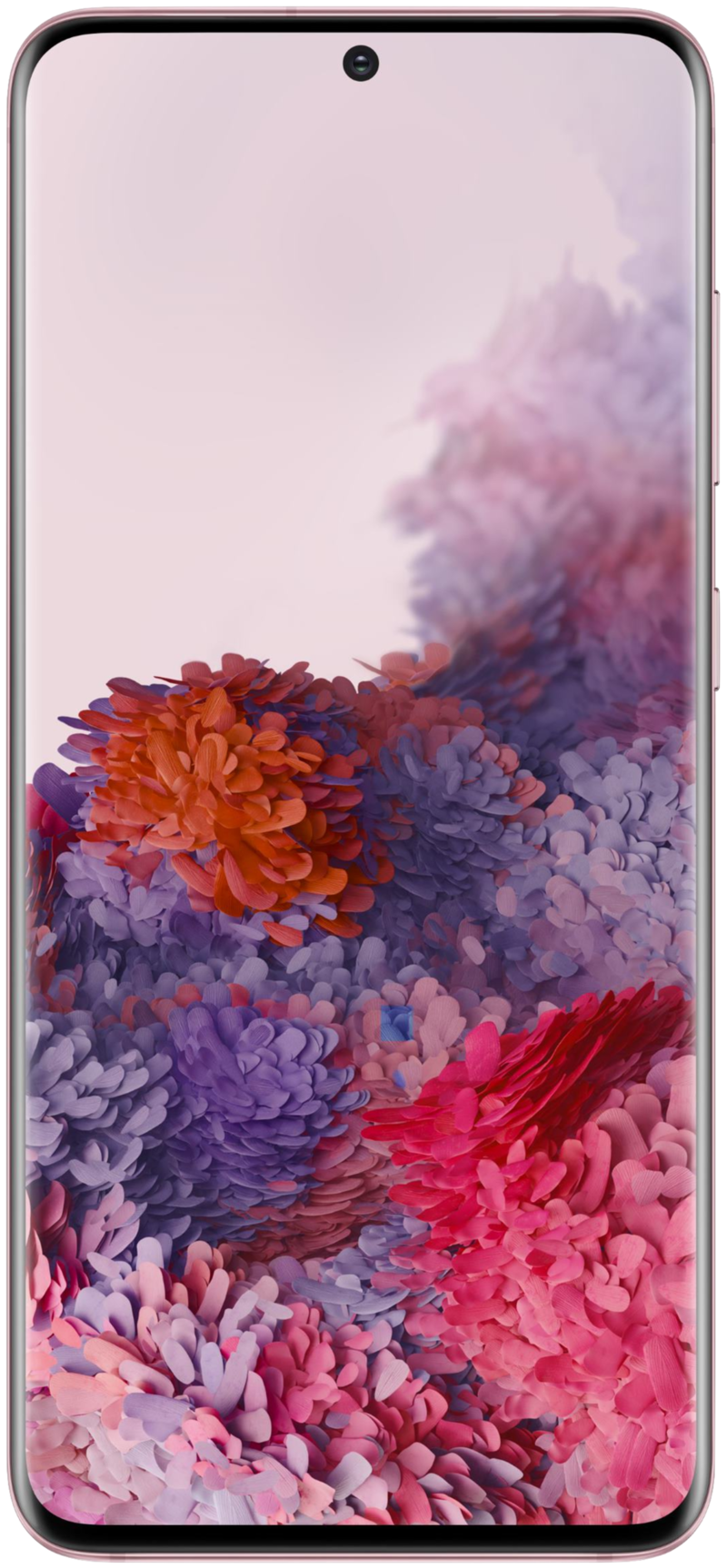
With a rich 120Hz screen, battery for long days, and top-of-the-line performance, Samsung made a flagship that actually justified its premium price without being too full of itself or too overstuffed to hold comfortably.
Review Changelog, April 2021
This article was orginally published in March, 2020. It was updated in April 2021 with the following changes:
- Updated pricing and availability to reflect that the S20 is not being widely sold anymore.
- Updated the competition to highlight newer phones.
- Updated the software section for One UI 3.1 and Android 11.
- Updated the 5G compatibility to reflect a wider rollout of sub-6 and the improved 5G compatibility of the S21 over the S20.
- Updated the Should you buy section to reflect that you likely shouldn't purchase this phone new in 2021.
Ara Wagoner was a staff writer at Android Central. She themes phones and pokes YouTube Music with a stick. When she's not writing about cases, Chromebooks, or customization, she's wandering around Walt Disney World. If you see her without headphones, RUN. You can follow her on Twitter at @arawagco.
